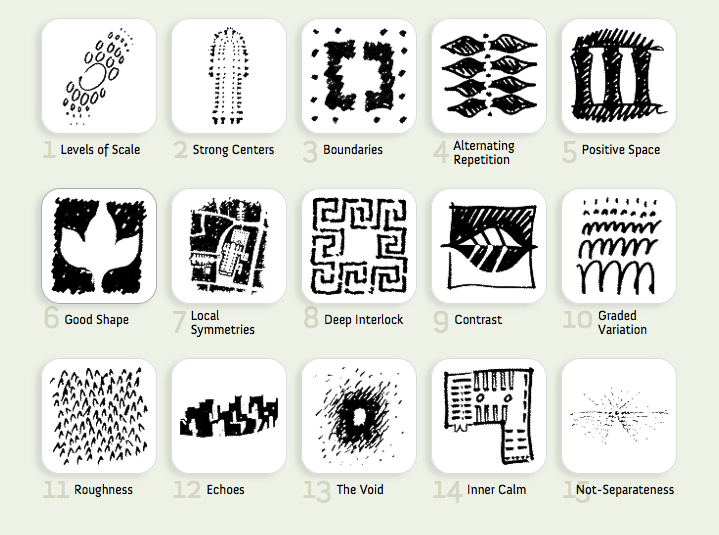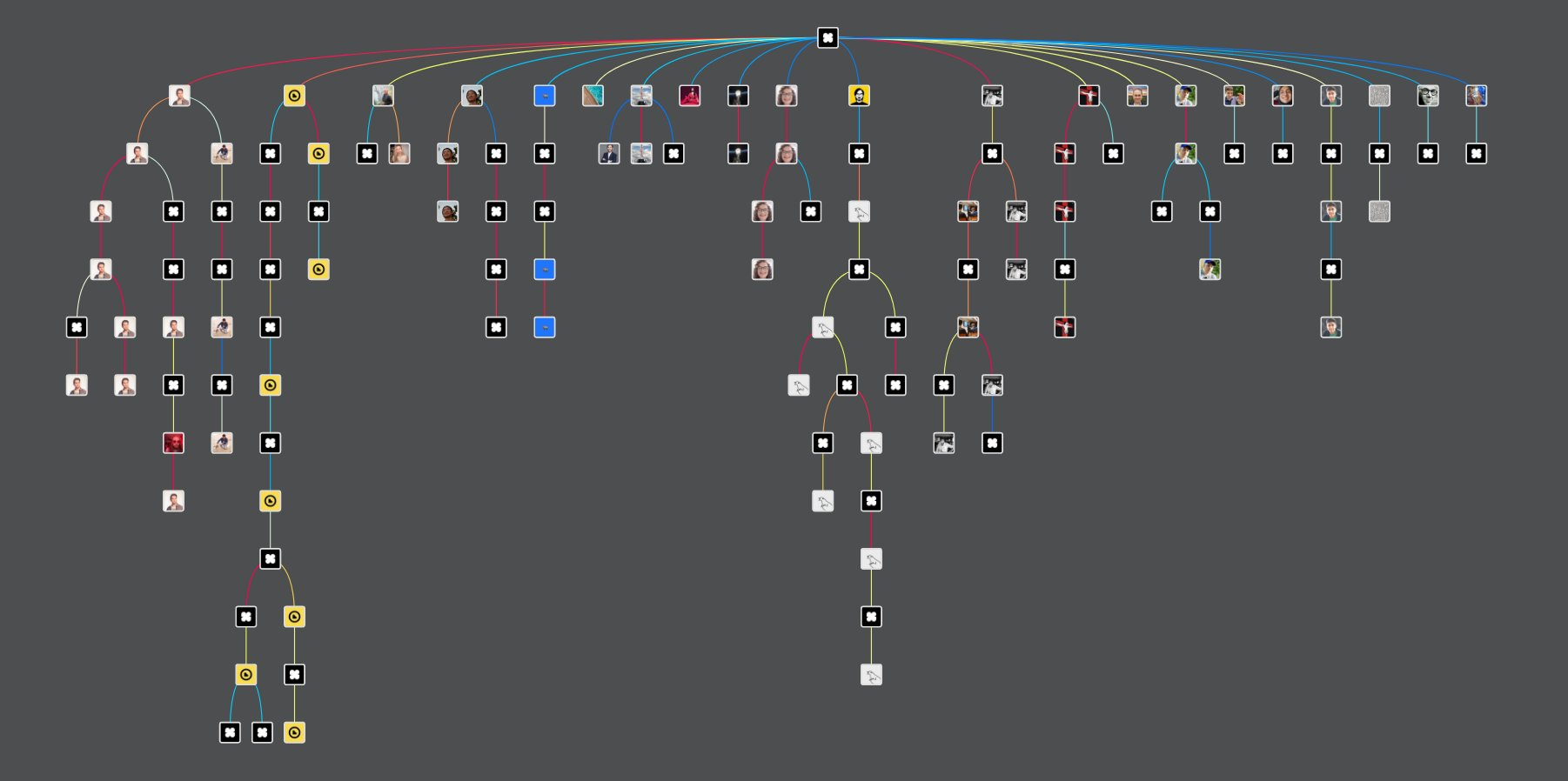Cyberspace to Cyberplace
Last updated 2 years ago
This post is a broad exploration, it doesn’t have a single central goal or thesis so I will be presenting quotes, resources, and various reflections on these to start circling around the topic from different angles.
What makes something feel like a place on the internet?
First of all, what is a place?
a place is generally a space with something added—social meaning, convention, cultural understanding of role, function, nature, and so on
And in the same paper they come back to the idea from a different framing:
“space is the opportunity, place is the understood reality”
For example, a house is a “space” but a home is a “place” — the idea of home is more than just a space with a roof, walls and furniture but rather exists with layers of meaning: emotional connection, memories, and spaces you’ve personalized and made very much your own. People carve places out of spaces.
And yet, every space has the opportunity to become a place
To explore the question of internet spaces in broader detail I asked twitter this question, what makes something feel like a place on the internet?
To summarize some points that emerged from the conversation:
- Latent potential for connection; “adjacent possible” — sense of serendipity
- Object permanence, solidity — sense of predictability
- Ephemerality — sense of scarcity?
- Human-made, handcrafted — sense of humanness
- Regulars; a place frequented by interesting people — sense of activity?
- Spatial canvas / ZUIs — everything has spatial location
- Shared context; shared space — what I see you see; what I hear, you hear
- Conductive substrate
- Conveys worldview; establishing shot of digital space — sense of story
I’ve noticed a few different paradoxes or dichotomies going on here:
- Predictability vs. Serendipity
- Permanence vs. Ephemerality
- Canvas (tangible space) vs. Worldview (mental space)
The last one might not be so much of a paradox, but exploring this further:
“a virtual place is elusive in boundary and contrary in nature: humans often wish to experience both the periphery and the center, simultaneously” (Champion, 2007)
Perhaps it’s only a limit of our classification abilities that we see these things as relatively opposite each other, whereas really each element contributes to envelope the same feeling of place — just as we might consider the idea of a “boundary” to distinguish one space from its surroundings, the very concept almost depends on the idea of a boundless space outside of itself.
Likewise you can’t have predictability without serendipity, nor permanence without ephemerality, because these ideas exist relative to each other in our conceptual system.
However it may also be that each may simply apply to different layers of place: whether that is a permanent space that enables ephemeral interactions, or an ephemeral place lasting connections; a world that is predictable, yet full of serendipitous encounters.
In addition to this collaborative exploration of place, I also came across this paper on “Designing places in cyberspace” (Kalay and Marx, 2001) which details a list of properties which contribute to the feeling of place in digital space:
- Events — purpose of being there
- Presence — engagement with objects or other people
- Relative location — where you are, where you are going
- Authenticity — change and serendipity, chance of seeing something new
- Adaptable — personalization, leaving a mark; personal & communal
- Variety of experiences — points of view, levels of abstraction
- Transitions — journey from one place to another
- Memorable — They are places you want to be in, to stay at
I clearly see some overlap between this list and my own crowdsourced version, yet there are some interesting points here that stand out to me: particularly “adaptable”, and “transitions.” The topic of adaptability wasn’t brought up in the twitter conversation but marks an important factor that I’ve thought about in other contexts: particularly the idea of “modding” and the spectrum of modding, giving people the ability to modify spaces at different levels of fidelity.
But then on the idea of “transitions,” I’m not really sure what to make of it. Kalay and Marx describe in their paper that “the choice and control over transitions in Cyberspace from place to place offers much greater richness than physical space affords: one can hyper-jump, or use the journey as an event in and of itself”—but what kinds of transitions currently exist in cyberspace? and how can we design new ones?
I took a rather literal approach to thinking about digital transitions in this browser experiment I made a little while back, but I’d think most transitions we experience—particularly on the modern web—are a little more… abstract?
Another example I’d like to bring up—because it may be relevant to this discussion about place—is Christopher Alexander’s 15 properties of “life.” I feel that his concept of life in architecture is very close to these ideas of space vs. place. However he takes a more physical approach, looking more more at how life can arise out of the built environment itself:

These 15 properties would take much more time to unpack and explore further—especially in relation to digital space (given that these elements are much more grounded in physical space), but I think understanding this properties may prove deeply useful to exploring the ideas of space and place. Especially since the idea of “life” emerging out of objects and the built environment goes somewhat against most rhetoric in urban studies that “place” only emerges by people inhabiting and ascribing meaning to it. One of the papers I’ve read mentions:
“place–making, therefore, is a process of creating conditions that afford, or encourage, the emergence of a particular sense of place. While designers may not be able to create a sense of place directly, the forms they make can help, or hamper, its creation” (Kalay and Marx, 2001)
While I agree that as designers we can mostly only create the conditions that lead to the emergence of place—there is also a grain of falseness in this fact.
One example that comes to mind are the games “Myst” and “Riven.” Both these games create a fantastic sense of place, and yet, they are entirely designed and for the most part lack the presence of any people (virtual or otherwise) within their worlds. In fact, the worlds are mostly devoid of life, yet the artifacts, buildings, and mechanical devices give a sense of deep history and a mystery to be uncovered. And when the game designers talk, they speak of Myst and Riven as “places”:
“We just wanted something that was more dynamic more alive” (0:52 Making of Riven{#link-to-www-youtube-com-4}{#link-to-www-youtube-com-3}{#link-to-www-youtube-com-2})
“Riven became a place to us as we were designing it” (5:09 Making of Riven)
“our attempt was to make elements in the riven world look old and used and broken in… we’re used to weathered things, that implies reality” (5:15 Making of Riven)
“it’s just extremely important to us when we’re creating anything that we’re not to do it just for the sake of doing […] We try to really put meaning into every aspect of the world we’re building” (6:15 Making of Riven)
And since one of the major questions I’m trying to explore in thinking about the difference between space and place here is to imagine what a digital campus might look like, it seems fitting to include one additional quote from one of the co-creators of Myst as he was describing an educational game they worked on along the path of history towards creating Myst:
“our take on education was that we didn’t really care about teaching kids or anyone else anything, we were more interested in making them curious or motivated about things” (9:19 Myst Co-Creator Randy Miller: Extended Interview)
Conclusion
While all the elements listed above undoubtedly contribute to create a sense of place. Three key concepts that have lodged themselves in my mind are: humanness, serendipity, and presence:
- A digital place needs a sense of humanness, whether that is making it feel handcrafted and authentic, or the ability to interact or communicate with real people (whether real-time or asychronously)
- There needs to be a possibility of the unexpected, the sense that there are things left undiscovered, new people or ideas you might stumble upon by being part of a place or community. A sense of both serendipity and opportunity (after all, serendipity is often a kind of unexpected opportunity—thus more opportunities can lead to greater serendipity?)
- And finally, a sense of presence. But there are different scales of presence—immediate or synchronous co-presence is simply the tip of the iceberg when it comes to creating a feeling of presence. Sometimes the strongest feeling of presence may come through sensing activity, care, or upkeep of a place over longer time-scales of months, years, or even decades.
Note: It almost feels like these three ideas are different facets, different lenses looking upon the same fundamental idea. Perhaps that idea is “place”, or perhaps it is something we do not yet have a word for.
This journey, research, and conversations have been very useful for me to get a better idea of what it means to create places, both on and off the internet. One next avenue of exploration would be to delve into more concrete designs that create the conditions for place to emerge within digital space.
References
Champion, Erik. “When windmills turn into giants: the conundrum of virtual places.” Techné: Research in philosophy and technology 10.3 (2007): 1-16.
Kalay, Yehuda E., and John Marx. “Architecture and the Internet: Designing places in cyberspace.” Proceedings of ACADIA 2001: Reinventing the Discourse (2001): 230-240.
Harrison, Steve, and Paul Dourish. “Re-place-ing space: the roles of place and space in collaborative systems.” Proceedings of the 1996 ACM conference on Computer supported cooperative work. 1996.
